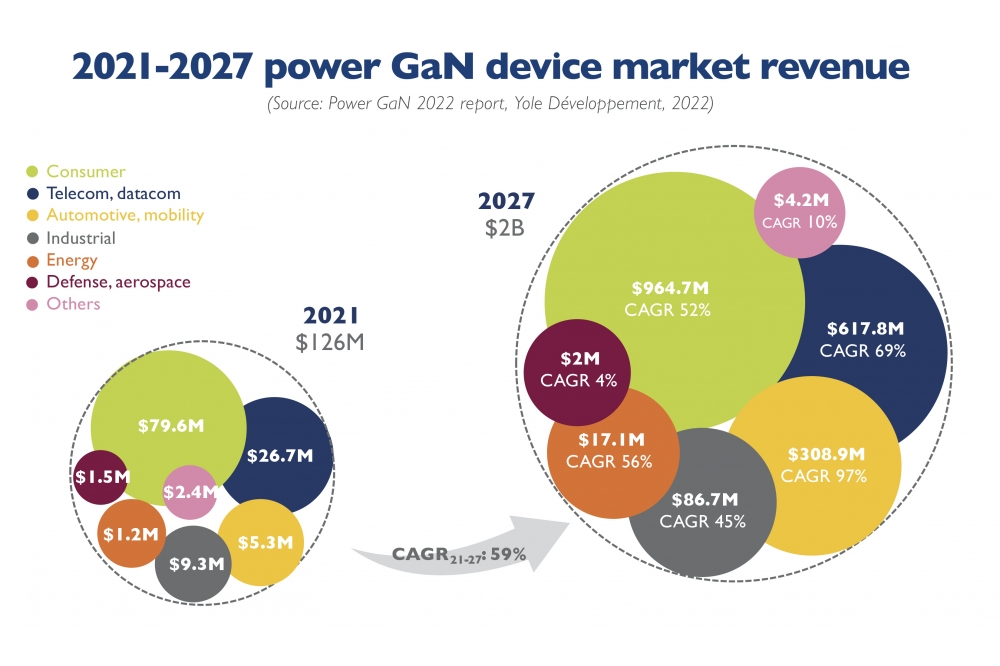Power GaN: the next wave …

Comms and cars will drive the next power GaN wave, says Yole
Yole forecasts that the power GaN market will reach $2B in 2027. In its latest annual report, Power GaN 2022, Yole details the penetration of GaN devices in different applications from the system point of view.
The consumer power supply market will be worth more than $915.6 million by 2027, with a 52 percent CAGR between 2021 and 2027. Yole forecasts an increase in the mid term of GaN penetration in datacom/telecom as regulations become stricter. The interest in adopting 48V-Point-Of-Load systems in data centres to reduce power consumption and cabling volume will favour GaN for low-voltage applications. An increasing number of power suppliers are adopting GaN in their systems. Transphorm, EPC, Texas Instruments, Infineon, and GaN Systems have all announced several design wins. Therefore, the GaN market for datacom/telecom is expected to have a 69 percent CAGR over the forecast period, to more than $617.8 million in 2027.
At a lower penetration level, automotive DC-DC converters and OBCs will be part of the next wave of growth during the forecast period. There are ever more collaborations between GaN device players, who are accelerating the automotive qualification of their products, and the Tier-1 and OEMs , who are evaluating automotive GaN solutions. The GaN automotive market is expected to exceed $227 million by 2027, with a 99 percent CAGR between 2021 and 2027.
In its Power GaN 2022 report, Yole’s analysts also highlight the dynamic supply chain with new entrants and significant investments. Indeed, since the release of the 2021 report, the market research & strategy consulting company has witnessed the entry of new players into the supply chain. Notably, Rohm is offering a 150V GaN product for telecom/datacom applications. BelGaN, a new GaN foundry based in Belgium, has recently acquired Onsemi’s fab. And on the fundraising front, Navitas went public through a SPAC business combination after an agreement valued at $1.04 billion with Live Oak Acquisition Corp.
Focusing on the Chinese ecosystem, the government has supported more investments from GaN players. Innoscience, for instance, is investing more than $400 million to expand its 8-inch wafer capacity from 10k to 70k wafers per month by 2025. A domestic supply chain for GaN power is well developed, especially for the consumer market. The transition to the 8-inch platform and the consolidation of the supply chain with more players at each level are driving lower manufacturing costs, especially at the epitaxy step, which constitutes the most significant part of a GaN device’s cost structure. In fact, one of the big questions is around the use of in-house epitaxy and outsourced epitaxy for future high volumes.


































